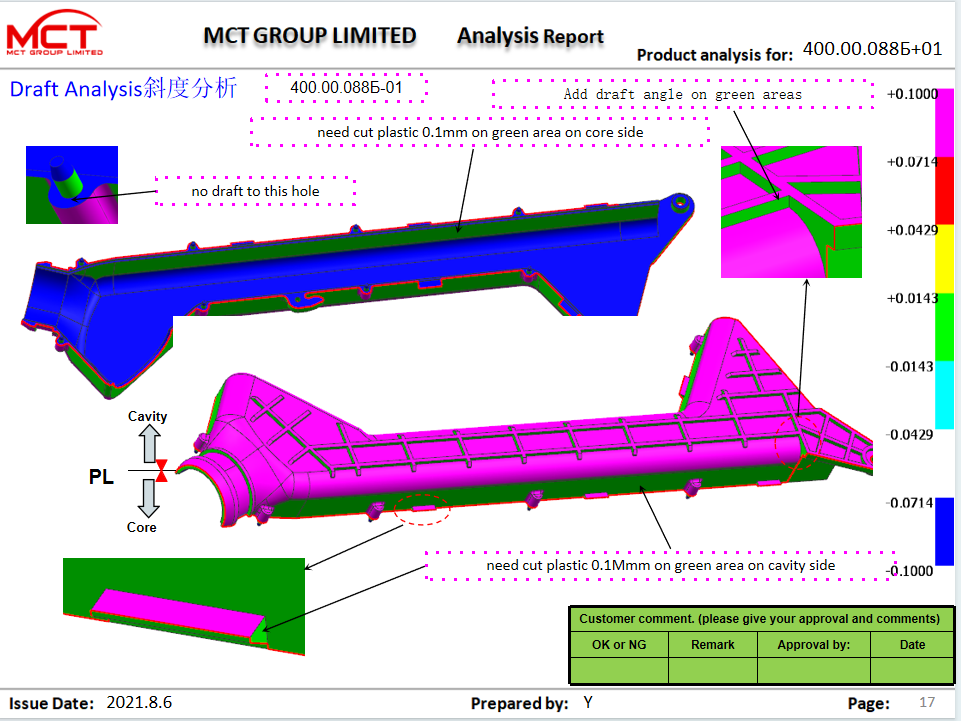Why do we make a DFM report before making a mold for a plastic mold?
- Home
- Why do we make a DFM report before making a mold for a plastic mold?

Why do we make a DFM report before making a mold for a plastic mold?
Stamping dies are specialized tools used in metalworking to shape or cut metal parts into specific forms. There are several types of stamping dies, each designed for different purposes:
Blanking Dies: These dies are used to cut flat shapes out of sheet metal. They work by shearing the metal along a defined outline.
Piercing Dies: Similar to blanking dies, piercing dies are used to punch holes through sheet metal. They can create simple round holes or more complex shapes.
Forming Dies: Forming dies are used to bend, stretch, or otherwise shape sheet metal into specific forms. They can be used to create bends, flanges, or other complex geometries.
Drawing Dies: Drawing dies are used to form sheet metal into three-dimensional shapes, such as cups or cylinders. They work by pulling the metal through a die cavity using a punch.
Progressive Dies: Progressive dies are a series of individual dies arranged in a sequence along a single strip of metal. As the metal strip moves through the dies, each operation is performed sequentially, allowing for the creation of complex parts in a single operation.
Compound Dies: Compound dies combine multiple operations into a single die. They are used to perform multiple operations, such as cutting, bending, and forming, in a single press stroke.
Trimming Dies: Trimming dies are used to remove excess material from a stamped part, often after it has been formed or punched. They can be used to trim edges or remove burrs.
Coining Dies: Coining dies are used to create precise, high-quality surface finishes on stamped parts. They can be used to add textures, patterns, or other features to the surface of a part.
These are some of the most common types of stamping dies, but there may be variations or specialized dies used for specific applications within metalworking industries.

